The Rise of Sustainable Luxury in the Gulf
- THE BUZZAAR
-
Oct 01
- Share post
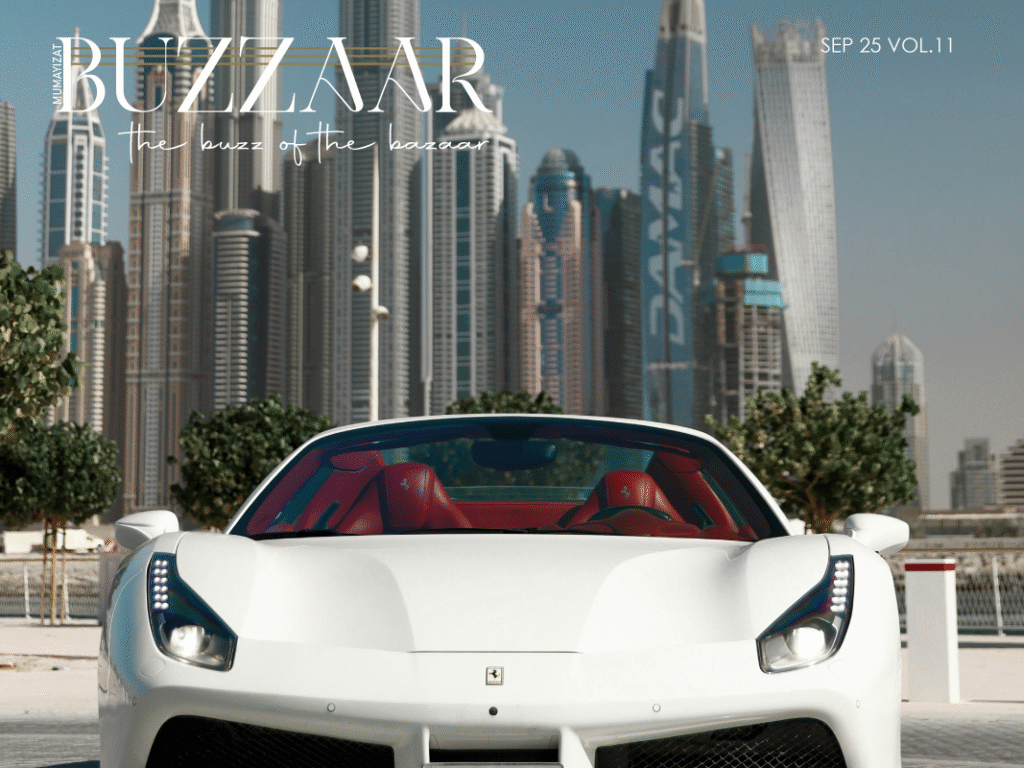
Editor’s Foreword – oCTOBER 2025
Welcome to the latest edition of BUZZAAR, where lifestyle, culture, and innovation converge across the Gulf. As the region continues to evolve at an unprecedented pace, so do the stories that define it—from the rise of visionary female entrepreneurs and trailblazing tech innovations to the reimagining of traditions in fashion, wellness, and urban living.
This issue celebrates the spirit of modernity rooted in heritage, highlighting the Gulf’s vibrant creative renaissance. Inside, you will discover how young innovators are blending local culture with global trends, whether through sustainable fashion, culinary experimentation, or groundbreaking smart city designs. From the bustling streets of Dubai to the serene landscapes of Oman and the visionary projects in NEOM and Doha, our coverage captures the pulse of a region where ambition meets authenticity.
We also explore lifestyle trends that resonate on a personal level—wellness routines that nurture body and mind, curated experiences that transform everyday living, and the evolving art and design scene that is reshaping the cultural map of the GCC. Each feature in this edition is chosen not just to inform, but to inspire, encouraging our readers to embrace change, celebrate creativity, and live intentionally.
At BUZZAAR, we believe that lifestyle is more than aesthetics; it is a reflection of identity, vision, and aspiration. Whether you are seeking ideas, inspiration, or insight, we hope this edition sparks curiosity, conversation, and a deeper connection to the extraordinary world around you.
Enjoy the journey.
With curiosity and clarity,
Austin D’Silva, The Editor | BUZZAAR Lifestyle Magazine
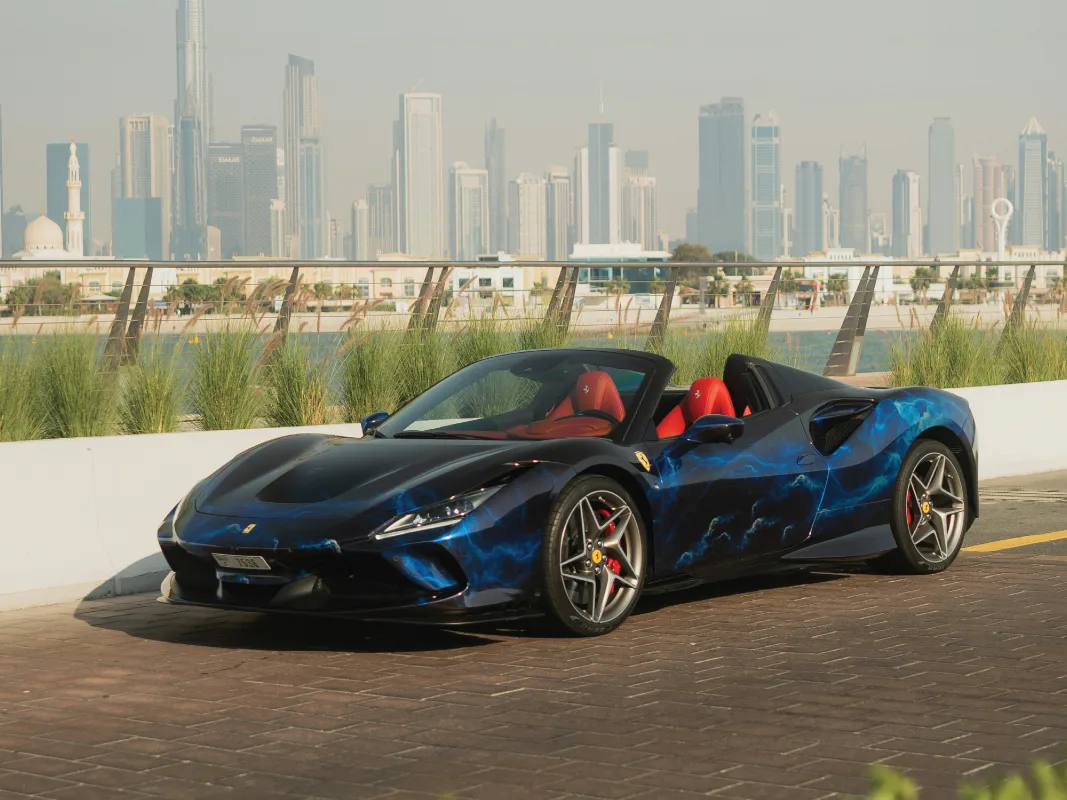
The Rise of Sustainable Luxury in the Gulf
For decades, the Gulf region has been synonymous with opulence. Glittering skyscrapers, luxury shopping avenues, high-end cars, and a culture that embraces grandeur have defined its global image. Yet, beneath this glittering façade, a quiet transformation is underway—one where sustainability is no longer an afterthought but a new definition of luxury.
Across fashion, beauty, real estate, and hospitality, a wave of eco-consciousness is reshaping how consumers and brands alike perceive luxury. The Gulf’s affluent population, once captivated purely by exclusivity and status, is now demanding products and experiences that align with values of environmental responsibility, wellness, and ethical consumption. BUZZAAR explores how this shift is taking shape across the GCC and the brands leading the way.
Fashion: When Green Meets Glamour
Luxury fashion has always thrived in the Gulf, home to some of the world’s largest malls and highest per-capita spenders on designer labels. But a new consumer profile is emerging—younger, socially aware, and unwilling to compromise on sustainability.
International brands have taken notice. From Gucci’s carbon-neutral runway shows to Stella McCartney’s plant-based materials, eco-luxury is no longer niche but mainstream. These global trends resonate strongly in GCC markets like Dubai, Doha, and Riyadh, where Gen Z and millennial consumers are increasingly vocal about ethical fashion.
Local designers are also carving a niche by weaving sustainability into their identity. Noora Hefzi, the Dubai-based designer, is celebrated for her timeless silhouettes crafted in small, ethical batches. In Saudi Arabia, Honayda Serafi’s brand “HONAYDA” blends luxury with conscious sourcing, ensuring minimal waste while spotlighting regional craftsmanship.
Meanwhile, rental platforms and resale apps are gaining traction among fashion-savvy consumers. Initiatives such as Designer-24 in the UAE or global luxury resale platforms now operating in the GCC allow customers to enjoy couture without adding to the cycle of overproduction. This shift not only challenges the traditional notion of ownership but also brings sustainability to the forefront of high fashion.
Beauty: Clean, Green, and Luxurious
The beauty industry in the Gulf is also undergoing a green revolution. For years, luxury beauty was associated with exclusivity, exotic ingredients, and lavish packaging. Today, luxury beauty is increasingly defined by clean formulations, cruelty-free practices, and eco-friendly packaging.
Global players like Chanel and Dior are rethinking packaging with refillable models, while skincare houses like La Mer are investing in ocean conservation initiatives. The UAE has also seen a boom in homegrown clean beauty brands. Shiffa Beauty, founded by Emirati Dr. Lamees Hamdan, combines natural ingredients with a holistic philosophy rooted in the region’s wellness traditions. Similarly, KJ Serums from Oman has gained popularity for its minimalist, effective formulations that prioritize both skin health and environmental sustainability.
This shift isn’t just about product development—it reflects the GCC consumer’s evolving mindset. Shoppers today want to know the story behind their serum or lipstick: Where was it sourced? Is it cruelty-free? Can the packaging be recycled? Beauty, once about prestige alone, is now about conscious indulgence.
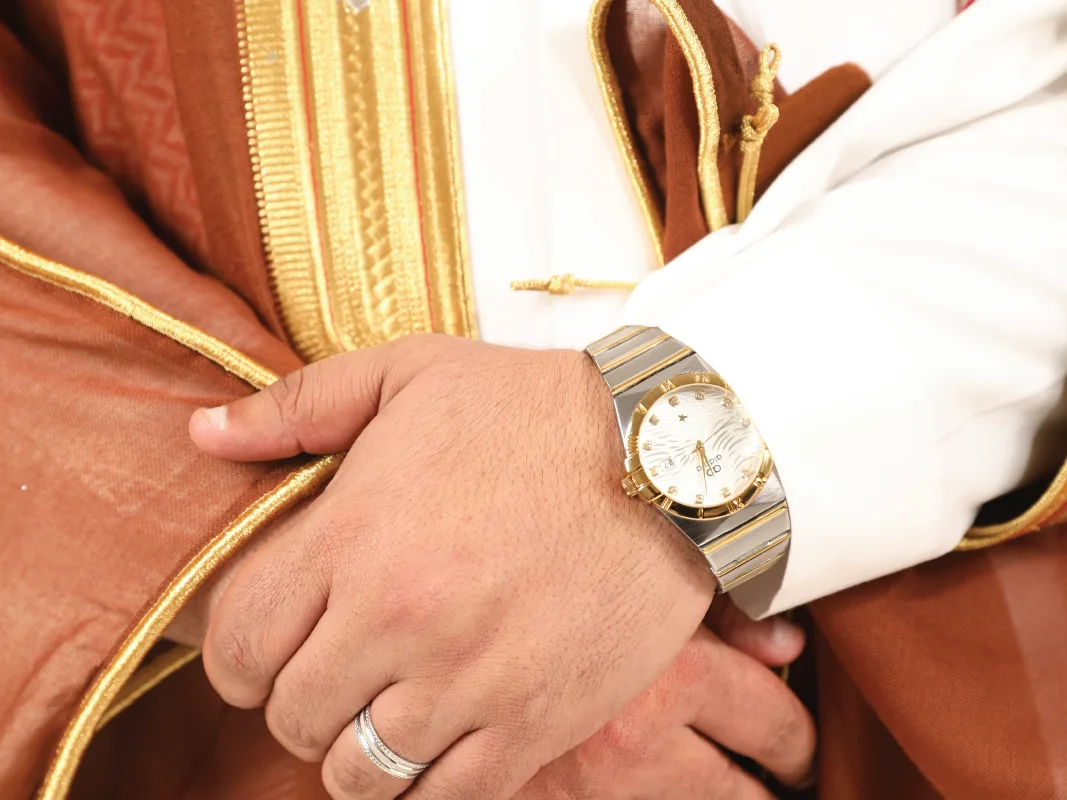
Real Estate: Sustainable Luxury Living
Perhaps the most striking transformation is unfolding in the real estate and hospitality sectors, where eco-luxury living is becoming a new standard. The GCC, with its ambitious cityscapes and futuristic developments, is reimagining luxury homes and resorts through a green lens.
In Dubai, projects such as The Sustainable City offer net-zero energy villas, solar-powered infrastructure, and green spaces that redefine luxury living. Residents enjoy both exclusivity and the peace of mind that their homes tread lightly on the environment. In Saudi Arabia, the NEOM megaproject promises a new model of sustainable urbanism, combining high-tech innovation with environmental stewardship.
Luxury hospitality is also embracing the trend. Resorts in Oman and the UAE are investing heavily in eco-tourism experiences, from coral reef conservation programs to farm-to-table dining concepts. For high-net-worth travelers, true luxury increasingly means privacy, authenticity, and harmony with nature—not excess.
Why Sustainability Equals Luxury in the Gulf
Sustainability and luxury might seem like opposing forces—one rooted in restraint, the other in indulgence. But in the Gulf, the convergence makes perfect sense.
- Exclusivity Through Rarity – Eco-conscious luxury often involves limited production, artisanal craftsmanship, and rare materials—qualities that align seamlessly with luxury consumers’ desire for uniqueness.
- Cultural Resonance – The Gulf’s heritage emphasizes stewardship of natural resources, from water conservation in desert life to respect for natural remedies. Sustainable luxury revives these traditions in a modern form.
- Global Prestige – For GCC consumers, luxury is also about global relevance. By embracing sustainability, they align with international standards and trends, enhancing status not only locally but globally.
- Next-Gen Consumers – The GCC has one of the world’s youngest populations. These consumers are digital natives, exposed to global environmental movements, and eager to reflect their values in their purchasing power.
Eco-Initiatives to Watch
- Dubai’s Green Fashion & Lifestyle Exhibition: An annual event showcasing sustainable fashion and lifestyle brands, highlighting how luxury and sustainability can coexist.
- Saudi Green Initiative: A national movement planting 10 billion trees, which will inevitably influence real estate and luxury lifestyle developments.
- Local Jewelry Brands: Designers like Aisha Baker are experimenting with ethically sourced gems and recycled metals, proving fine jewelry can sparkle without guilt.
- Circular Economy Start-ups: Companies like Cartlow in the UAE, focusing on re-commerce and refurbishment, are adding sustainable convenience to the luxury lifestyle ecosystem.
The Future of Sustainable Luxury in the GCC
Looking ahead, the rise of sustainable luxury is not just a passing trend but a long-term transformation. GCC governments are investing heavily in green infrastructure, and brands that fail to adapt risk losing relevance in a rapidly evolving market.
For consumers, sustainable luxury offers the best of both worlds—the indulgence of fine living coupled with the assurance of ethical, eco-conscious choices. Whether it’s slipping into an ethically crafted couture gown, applying a clean luxury serum, or stepping into a solar-powered villa overlooking the Gulf, the message is clear: true luxury is no longer just about owning more, but about owning better.
Key Insights – As BUZZAAR continues to track lifestyle trends across the region, one truth stands out: the Gulf is redefining luxury for the world, proving that sustainability and sophistication can not only coexist but thrive together.
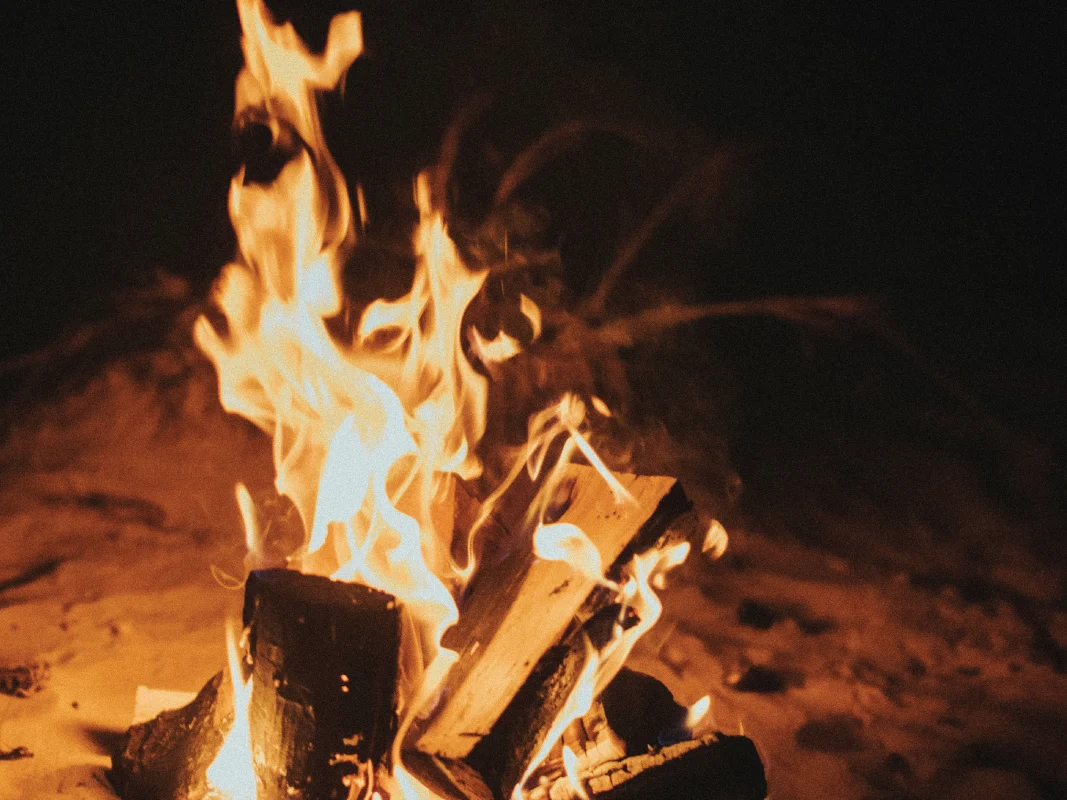
Desert Retreats: The New Wellness Escapes
When most people think of the Gulf, they imagine futuristic skylines, shopping festivals, and luxury cars. Yet, an equally powerful image is now emerging—serene desert retreats designed for wellness, healing, and digital escape. Across the UAE, Oman, and Saudi Arabia, the desert is being reimagined not as a harsh landscape, but as the ultimate sanctuary for body, mind, and soul.
UAE: Luxury Meets Holistic Healing
In the UAE, wellness retreats are blending high-end indulgence with ancient traditions. Resorts like Al Maha, A Luxury Collection Desert Resort & Spa in Dubai offer secluded villas tucked among golden dunes, complete with private pools and spa treatments inspired by Bedouin heritage. Guests can enjoy therapies using regional ingredients—date scrubs, camel milk facials, and frankincense oils—while reconnecting with nature through guided desert walks and stargazing.
Meanwhile, Ras Al Khaimah’s The Ritz-Carlton Al Wadi Desert is pioneering the concept of holistic wellness. Here, yoga and meditation sessions unfold against the backdrop of sand dunes, while hydrotherapy pools and rain-forest-inspired showers create a contrast of elements. These retreats provide more than just luxury—they emphasize mindful living and digital detox, encouraging visitors to unplug from screens and rediscover stillness.
Oman: Where Tradition Meets Tranquility
Oman has long been celebrated for its natural beauty, from rugged mountains to untouched coastlines. Its desert retreats take this connection with nature a step further by infusing wellness with deep-rooted traditions.
Alila Jabal Akhdar, though perched in the mountains, sets the tone for Oman’s approach—its spa treatments draw from local healing practices using rosewater from nearby plantations. In the desert, Desert Nights Camp offers not just luxury tents but immersive wellness experiences such as moonlit yoga, sand meditation, and frankincense aromatherapy, connecting guests with Oman’s ancient trade legacy.
Frankincense, once called “liquid gold,” plays a central role in Omani wellness culture. Modern spas across Muscat and the Wahiba Sands integrate it into massages, incense ceremonies, and detoxifying facials, making every treatment a bridge between the past and present. Oman’s retreats emphasize authenticity and cultural grounding, offering travelers an escape that feels both luxurious and soulful.
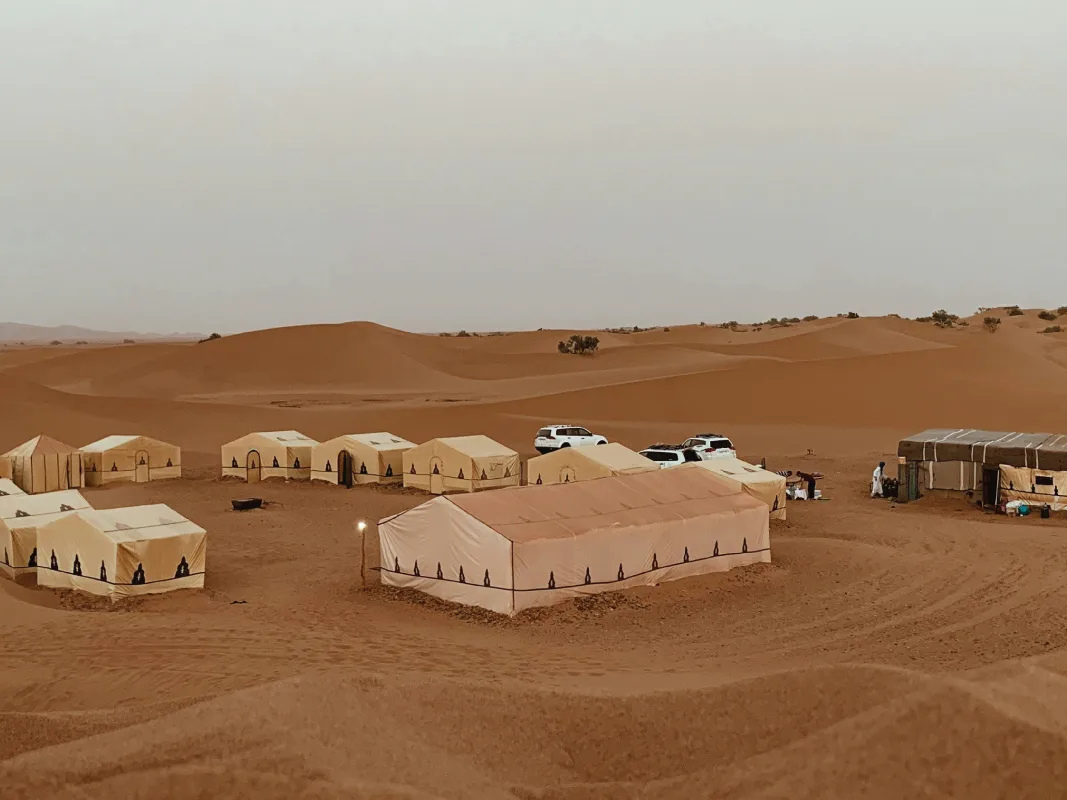
Saudi Arabia: The Future of Desert Wellness
Saudi Arabia is rapidly positioning itself as a global hub for luxury wellness tourism. With giga-projects like AlUla and NEOM shaping the future, the kingdom is merging its desert landscapes with cutting-edge wellness concepts.
In AlUla, the UNESCO-protected desert setting is being developed into a world-class wellness destination. Resorts here are designed to highlight the healing power of nature—open-air spas, desert hikes, and silent stargazing are combined with traditional hammam experiences and sound therapy. The stillness of the desert becomes the ultimate antidote to modern life’s chaos.
Looking ahead, NEOM’s The Line and Trojena promise wellness cities where digital detox is built into everyday living, powered by renewable energy and surrounded by unspoiled desert and mountains. For Saudi Arabia, wellness retreats are not just hospitality offerings—they are part of a broader vision to position the kingdom as a leader in sustainable, luxury wellness tourism.
The Power of Digital Detox
A common thread across these retreats is the emphasis on digital detox. Guests are encouraged to switch off devices, step away from the constant buzz of notifications, and immerse themselves in stillness. In the silence of the desert, the absence of Wi-Fi becomes a gift, offering space for introspection, meditation, and true relaxation.
Activities such as sand meditation, guided breathing under the stars, and sunrise yoga sessions are gaining popularity. These experiences resonate deeply with wellness travelers seeking not just a holiday, but a reset—a chance to disconnect from the digital world and reconnect with themselves.
The Desert: Nature’s Spa
The desert may seem unlikely as a wellness haven, but its qualities make it perfect for healing. The vastness offers solitude, the stillness calms the mind, and the climate—dry, warm, and clear—creates an environment ideal for relaxation and detox. Combined with luxury hospitality and a revival of traditional healing practices, the desert is being redefined as nature’s ultimate spa.
Key Insights – From Dubai’s luxury eco-spas to Oman’s frankincense rituals and Saudi Arabia’s futuristic desert sanctuaries, wellness retreats in the Gulf are experiencing a renaissance. Travelers are no longer satisfied with just indulgence; they seek purposeful luxury—spaces where they can heal, reflect, and recharge – as BUZZAAR explores the region’s lifestyle trends, one message is clear: the desert is no longer just a landscape to admire—it is becoming the soulful escape for a new generation of wellness seekers.
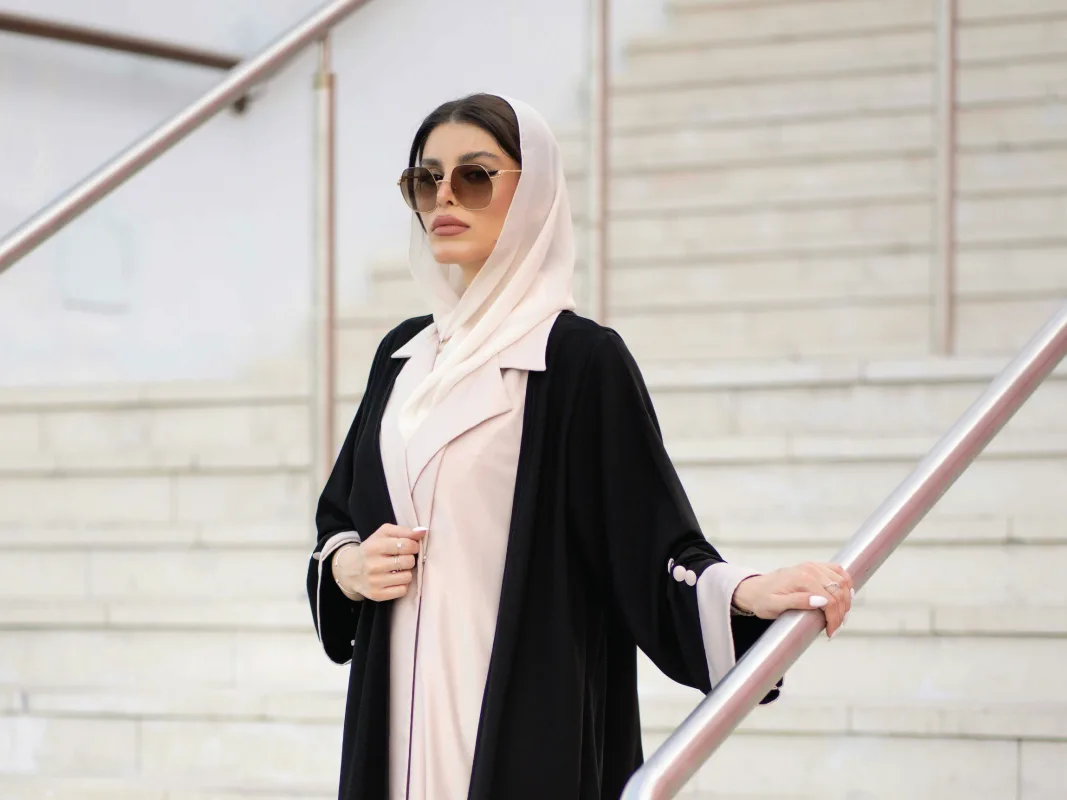
The Modern Khaleeji: Redefining Identity Through Fashion
Fashion has always been more than just clothes—it’s a language, a cultural marker, and a mirror of identity. In the Gulf, where tradition is deeply rooted yet global influences are undeniable, a new fashion story is being written by Gen Z and Millennials. The Modern Khaleeji is not confined by convention but empowered to blend tradition with streetwear, modest fashion, and international trends. The result is a vibrant, hybrid style that redefines what it means to dress—and live—Khaleeji in the 21st century.
Tradition Meets Streetwear
For decades, the Gulf’s fashion identity was centered on traditional attire: the abaya and hijab for women, the dishdasha or thobe for men. These garments remain powerful cultural anchors, but the younger generation is reshaping how they are worn.
Streetwear, with its bold graphics, sneakers, and oversized silhouettes, has become the canvas upon which Gulf youth reinterpret their heritage. In Riyadh and Dubai, young men wear tailored thobes paired with designer sneakers and baseball caps. Women are experimenting with open abayas layered over jeans, crop tops, or branded hoodies.
This fusion of local and global sends a clear message: tradition doesn’t have to mean rigidity. Instead, it can evolve, adapt, and even thrive in dialogue with global street culture.
The Rise of Modest Fashion
Another key driver of the Modern Khaleeji identity is the global rise of modest fashion. Once considered niche, modestwear is now a billion-dollar industry, with major brands from Nike to Dolce & Gabbana launching collections tailored to conservative yet style-conscious audiences.
For Gulf Millennials and Gen Z, modest fashion is not about compromise—it’s about creativity. Layering, textures, and silhouettes allow them to express individuality while respecting cultural and religious values. Designers such as Hessa Al Falasi in the UAE and Arwa Al Banawi in Saudi Arabia are celebrated for crafting pieces that marry elegance with edge.
This intersection of modesty and modernity has put the GCC on the global fashion map. Fashion weeks in Dubai, Doha, and Riyadh now spotlight local talent whose designs resonate far beyond the region.

Global Aesthetics, Local Voice
What distinguishes the Modern Khaleeji is not just the adoption of global trends but the ability to localize them. The Gulf youth are hyperconnected, consuming K-pop, hip-hop, and high fashion from Paris and Seoul in equal measure. Yet, they reinterpret these styles through a distinctly Khaleeji lens.
For instance, Japanese-inspired streetwear brands have found enthusiastic audiences in Kuwait and Bahrain, but are often styled with embroidered sheilas or traditional jewelry. Similarly, international luxury labels are embraced, but worn with a regional twist—think Gucci sneakers under a flowing abaya or Dior bags paired with kaftans.
Social media amplifies this aesthetic exchange. Platforms like Instagram and TikTok showcase influencers such as Ascia AKF (Kuwait) and Nojoud Al Rumaihi (Saudi Arabia) who embody this global-local blend. Their millions of followers are proof that the Modern Khaleeji style is not just personal expression—it’s cultural export.
Fashion as Identity and Empowerment
The Modern Khaleeji movement is also about more than style—it’s about agency. Gulf youth are using fashion to assert their identity in a rapidly changing world. By mixing streetwear with abayas or pairing sneakers with kanduras, they are saying: we are rooted yet global, proud yet progressive.
This is particularly powerful for women. Fashion becomes a space where they can negotiate tradition and modernity on their own terms, experimenting with silhouettes that allow both modesty and individuality. Men, too, are breaking molds by embracing color, contemporary tailoring, and accessories once considered unconventional. Fashion, in this sense, is not just about clothes—it’s about confidence, visibility, and the ability to shape narratives of what it means to be Khaleeji today.
Looking Ahead
As the GCC continues to evolve, so too will its fashion identity. With government investments in creative industries, the rise of regional fashion weeks, and the increasing global recognition of Gulf designers, the Modern Khaleeji aesthetic will only gain prominence.
What began as a personal style choice is now becoming a cultural movement. It celebrates heritage without being bound by it, embraces global trends without losing local authenticity, and most importantly, gives voice to a generation determined to define itself.
In the end, the Modern Khaleeji is more than a fashion trend—it is a lifestyle, a declaration of identity, and a bold vision of the Gulf’s future.

Future of Food: From Camel Milk Lattes to Lab-Grown Kebabs
The GCC has long been associated with luxury dining, extravagant buffets, and global culinary influences. Yet, beneath this indulgence, a quiet revolution is reshaping the way people eat, cook, and experience food. From camel milk lattes in Dubai cafés to lab-grown kebabs in Riyadh, the region’s food-tech scene is evolving rapidly, driven by sustainability, innovation, and a growing appetite for local experimentation.
Camel Milk: Tradition Meets Trend
Camel milk has been a staple in desert diets for centuries, prized for its nutritional value and medicinal properties. Today, it is experiencing a modern revival in the Gulf’s cafés and wellness menus.
In Dubai and Abu Dhabi, artisanal cafés are serving camel milk lattes, cappuccinos, and ice creams, often paired with superfoods like turmeric, date syrup, or cardamom. Brands like Camelicious have popularized camel milk as a lifestyle choice rather than just a traditional drink. Consumers are drawn not only to its health benefits—high in protein, low in cholesterol—but also to its novelty and connection to regional heritage.
Restaurants are also experimenting with camel milk in desserts and cheeses, creating dishes that merge heritage ingredients with contemporary culinary techniques. The result is a blend of nostalgia and innovation, appealing to both locals and tourists eager for a unique gastronomic experience.
Lab-Grown and Plant-Based Proteins
The future of meat in the Gulf is increasingly lab-grown and plant-based, driven by sustainability and food security concerns. Saudi Arabia, the UAE, and Qatar are investing heavily in food-tech startups that can produce meat without the environmental footprint of traditional livestock farming.
Companies like Aleph Farms, with operations in the UAE, are pioneering lab-grown steaks and kebabs that are genetically identical to conventional meat but produced with far less water, land, and greenhouse gas emissions. Meanwhile, plant-based alternatives such as Beyond Meat and Impossible Foods are gaining popularity in high-end restaurants and fast-casual chains across the GCC.
This shift is part of a broader sustainability agenda. With the Gulf importing over 80% of its food, lab-grown and plant-based proteins represent a way to reduce dependency, cut carbon footprints, and ensure food security for a rapidly growing population.

Sustainability on the Plate
Sustainability in cuisine is not limited to meat alternatives. The Gulf’s food industry is also embracing zero-waste cooking, urban farming, and local sourcing. Rooftop farms in Dubai, vertical farms in Riyadh, and aquaponics setups in Doha are turning the region’s arid landscapes into productive food hubs.
Chefs are experimenting with local ingredients like dates, figs, saffron, and seaweed, reimagining traditional dishes while keeping carbon footprints low. Zero-waste cooking initiatives are gaining traction, with kitchens transforming vegetable peels, seeds, and offcuts into broths, condiments, and innovative dishes.
Even in high-end hotels, menus now highlight seasonal, local produce, blending sustainability with culinary creativity. The message is clear: future luxury dining is not just about taste but about responsibility and innovation.
F&B Startups and Experiential Dining
The GCC’s food-tech ecosystem is also driving entrepreneurship and experiential dining. Food incubators and accelerator programs are nurturing startups that combine technology with gastronomy. From AI-powered menu personalization to robotic kitchens, innovation is reshaping how Gulf residents interact with food.
Dubai’s Future Food Lab and Riyadh’s Food-Tech Innovation Hub are platforms where chefs, scientists, and entrepreneurs converge to create sustainable, cutting-edge culinary experiences. Pop-ups and immersive dining events are increasingly featuring molecular gastronomy, edible robotics, and other futuristic techniques that turn eating into a sensory adventure.
Key Insights – The future of food in the GCC is a fascinating intersection of heritage, technology, and sustainability. Camel milk lattes celebrate the region’s desert roots, lab-grown kebabs signal a commitment to sustainable protein, and zero-waste kitchens redefine luxury dining. For consumers, it is an era of choice, curiosity, and conscious indulgence.
As BUZZAAR explores lifestyle trends across the Gulf, one thing is clear: the region’s culinary landscape is not just evolving—it’s being revolutionized. In the kitchens, cafés, and labs of the GCC, tradition and innovation are cooking side by side, promising a future where food is smarter, greener, and infinitely more exciting.
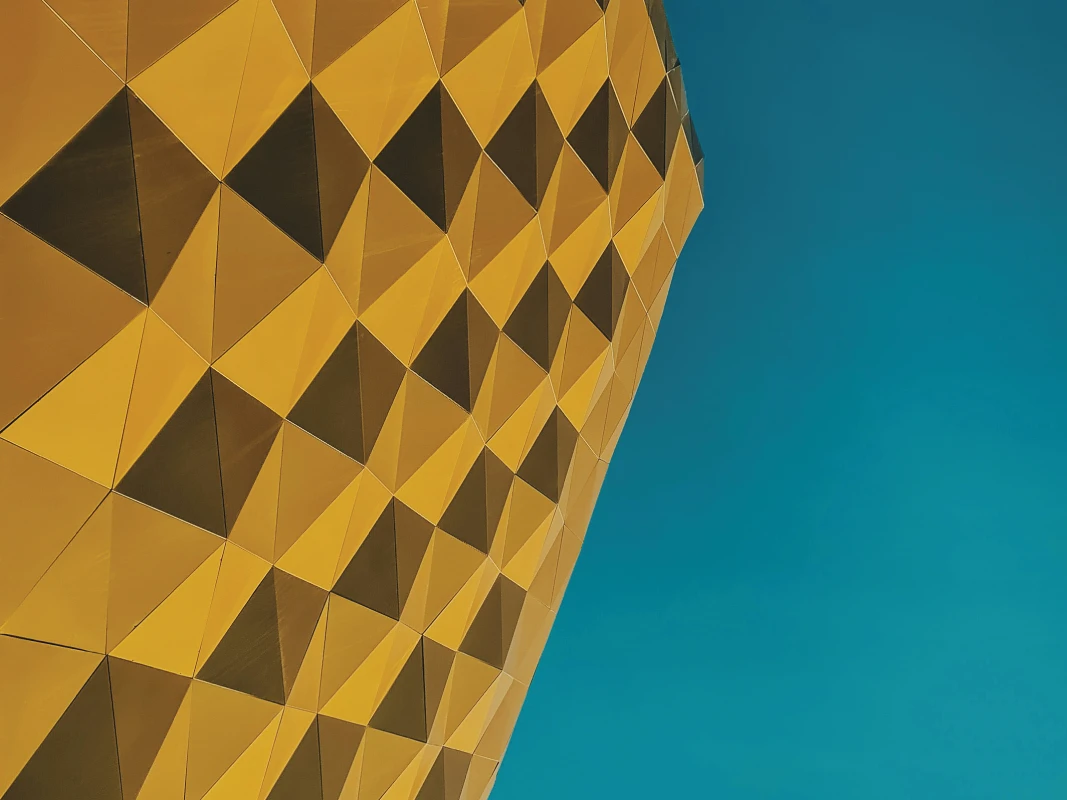
The Art Scene is Booming: Inside the GCC’s Creative Renaissance
The Gulf has long been known for luxury skylines, high-end shopping, and a vibrant hospitality scene. Yet, in recent years, a quieter, more transformative cultural revolution has been taking shape—the GCC is emerging as a global art and design hub. Cities like Riyadh, Doha, and Dubai are no longer just commercial capitals; they are incubators for creativity, home to world-class museums, dynamic art fairs, and a thriving street art movement.
Riyadh: Tradition Meets Contemporary
Riyadh, historically conservative in its cultural offerings, has experienced an extraordinary shift under Saudi Arabia’s Vision 2030. The King Abdulaziz Center for World Culture (Ithra) and the Misk Art Institute are now hubs for exhibitions, workshops, and artist residencies, nurturing a new generation of Saudi creatives.
Street art has also taken root in the capital. Murals and installations across Riyadh’s districts are transforming public spaces, creating a dialogue between tradition and modernity. Artists such as Ahmed Mater are gaining international recognition, blending heritage motifs with contemporary commentary on identity, faith, and society.
Doha: A Museum City
Doha has long been quietly cultivating its reputation as a cultural capital. The Museum of Islamic Art, designed by I.M. Pei, and the National Museum of Qatar, with its striking architecture by Jean Nouvel, are now internationally celebrated landmarks. These institutions are not just repositories for art—they are active cultural engines, hosting workshops, performances, and educational programs that engage the community.
Doha’s annual Doha Art Festival and Fire Station Artist-in-Residence program further highlight the city’s commitment to supporting artists, both local and international. Street art has also begun to flourish, with murals and installations in districts like Msheireb creating accessible cultural experiences that complement the city’s formal art institutions.
Dubai: From Commerce to Creativity
Dubai, long celebrated for commerce and luxury tourism, has firmly positioned itself on the global art map. The Dubai Design District (d3) and Alserkal Avenue are creative epicenters, hosting galleries, art studios, and cultural events. Alserkal Avenue, in particular, has transformed a former industrial area into a vibrant arts ecosystem, attracting regional and international talent.
Dubai Art Week and Art Dubai, one of the world’s leading contemporary art fairs, bring together collectors, curators, and artists from across the globe. Street art has also gained prominence, with bold murals and public installations turning city walls into canvases that reflect the diverse, cosmopolitan character of the emirate.
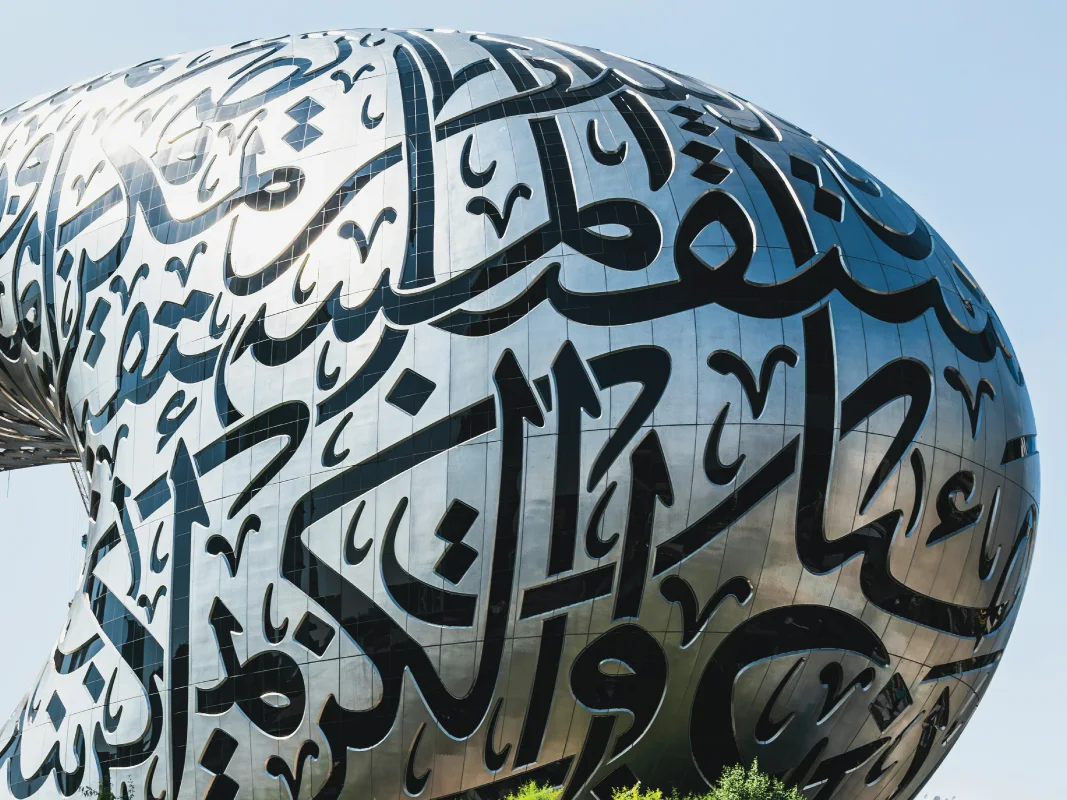
The Rise of GCC Collectors and Market
Alongside these cultural institutions, the GCC’s art market is flourishing. Wealthy collectors, both private and institutional, are investing in contemporary Middle Eastern art. This growth has fueled gallery openings, auction houses, and art fairs, creating a self-sustaining ecosystem where talent, commerce, and creativity intersect.
Local governments are also supporting cultural infrastructure. Saudi Arabia’s Diriyah Contemporary Art Biennale and Qatar’s Doha Art Market are examples of initiatives designed to attract global attention while nurturing regional talent. These efforts are placing the GCC on the world stage not just as a collector of art but as a producer of globally relevant culture.
A Creative Renaissance
The GCC’s creative renaissance is not limited to museums and galleries. Fashion, design, architecture, and even digital art are thriving. The blending of heritage and innovation is evident in everything from contemporary calligraphy to VR-based art installations.
The region’s young, tech-savvy population is also contributing to this cultural boom. Social media platforms have allowed emerging artists to showcase their work globally, while collaborations between international and local creatives are fostering cross-cultural dialogues.
Key Insights – From Riyadh’s reimagined streets to Doha’s museum hubs and Dubai’s vibrant art districts, the GCC is undergoing a cultural awakening. The region’s creative renaissance reflects a broader vision: one where heritage, modernity, and global influence converge to redefine what it means to be a cultural capital in the 21st century.
As BUZZAAR continues to track lifestyle trends across the Gulf, one message is clear: the art scene is not just growing—it’s thriving, shaping identities, and inspiring a generation of creatives who are putting the GCC firmly on the global cultural map.
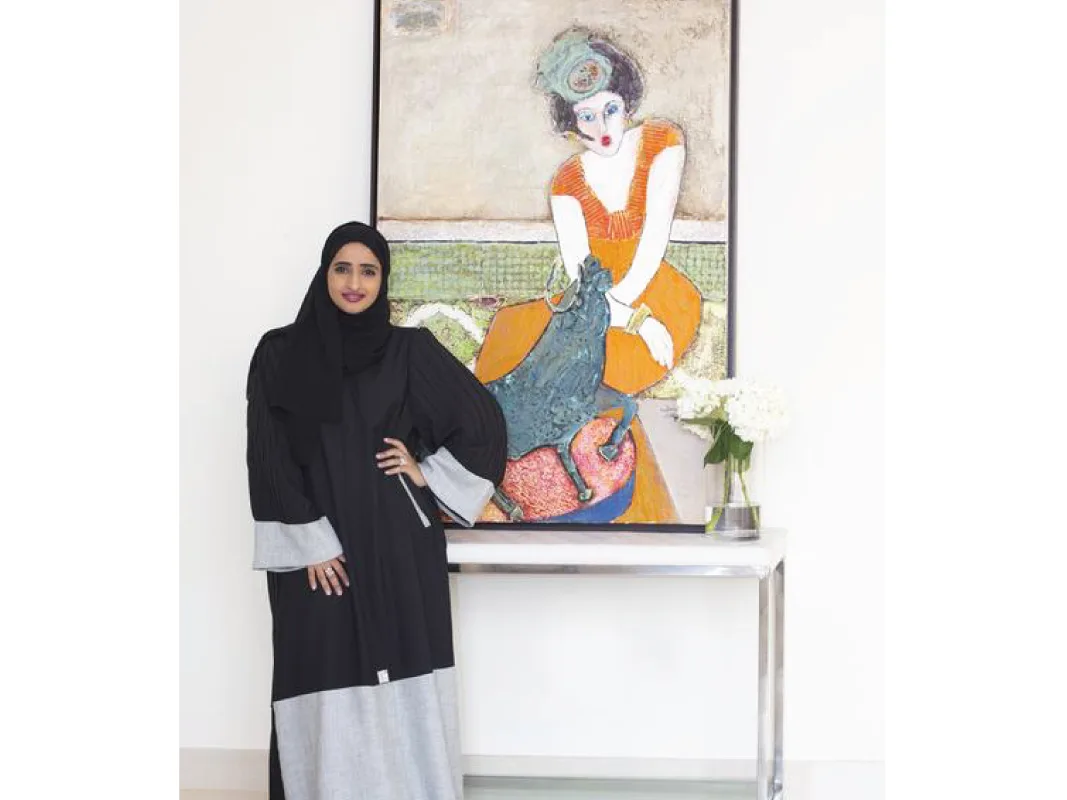
Female Founders of the Gulf: Bold, Brilliant, Breaking Barriers
The Gulf region has long been associated with luxury, ambition, and rapid economic growth. Yet behind the skyscrapers and thriving businesses, a quieter revolution is unfolding—women are leading it. Across sectors from fashion and wellness to tech and culture, female founders in the GCC are breaking barriers, redefining success, and inspiring a new generation of entrepreneurs.
Fashion Forward: Reinventing Style
In the Gulf, fashion has become a powerful platform for female entrepreneurship. Designers like Hessa Al Falasi in the UAE and Arwa Al Banawi in Saudi Arabia are making waves with collections that blend contemporary style with cultural authenticity. These women are not just creating clothes—they are telling stories of identity, heritage, and empowerment.
Social media has amplified their reach, allowing them to connect with global audiences while nurturing local markets. Influencers like Ascia AKF (Kuwait) and Nojoud Al Rumaihi (Saudi Arabia) are similarly redefining fashion norms, using their platforms to promote local designers and encourage conscious consumption. For these trailblazers, style is both business and activism—a statement of independence and creativity.
Tech Trailblazers: Innovation Meets Ambition
Female founders are also making significant strides in the tech ecosystem. Platforms like Misk Innovation in Saudi Arabia and Dubai’s Astrolabs are supporting women-led startups, enabling entrepreneurs to tackle everything from fintech to healthtech.
Entrepreneurs like Huda Al Lawati in Oman, founder of a tech-driven wellness platform, are merging cultural insights with cutting-edge solutions. These leaders are challenging stereotypes, proving that women in the Gulf can excel in traditionally male-dominated fields while creating products that resonate globally.
Their impact is not just economic; it’s cultural. By occupying spaces historically limited to men, female founders are reshaping perceptions of leadership, expertise, and ambition in the region.
Wellness Warriors: Healing and Empowering
Wellness is another area where Gulf women are leaving their mark. Founders like Anitara Pillai, the visionary behind Balance Spa, are redefining self-care in the region. Through holistic wellness services, mindfulness programs, and lifestyle education, they are empowering clients—particularly women—to prioritize health, confidence, and emotional well-being.
Similarly, female-led fitness studios, nutrition consultancies, and organic product lines are flourishing in cities from Dubai to Riyadh. These ventures reflect a broader cultural shift: women are not only seeking wellness for themselves but creating industries that encourage entire communities to embrace healthier lifestyles.
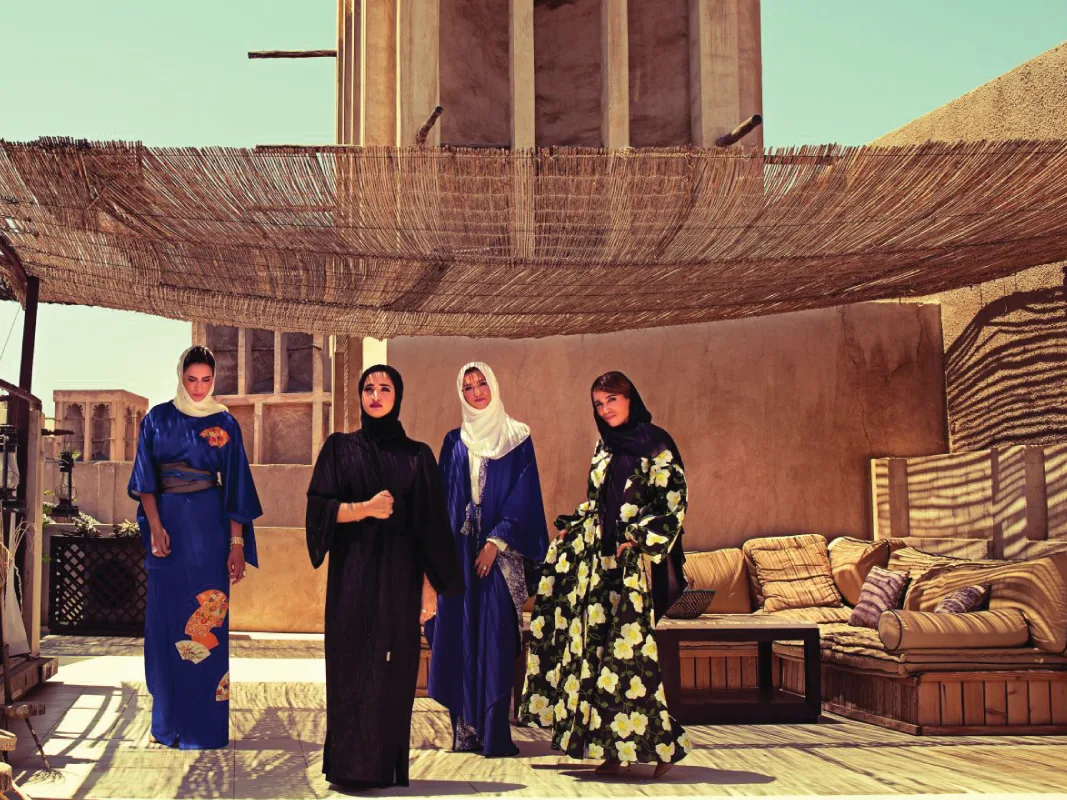
Cultural Changemakers: Beyond Business
Some female founders are transforming culture itself. Artists, media entrepreneurs, and social innovators are using their platforms to amplify voices, champion heritage, and drive societal change. Women-led creative agencies and lifestyle brands are now shaping the Gulf’s cultural narrative, proving that entrepreneurship can be both profitable and purpose-driven.
The GCC’s young population is particularly responsive. With a growing appetite for content, experiences, and products that reflect inclusivity and authenticity, female founders are perfectly positioned to lead this creative wave.
Breaking Barriers, Inspiring Generations
What unites these trailblazing women is courage—the willingness to navigate uncharted territory, challenge conventions, and lead with vision. They are breaking barriers not only in business but in societal perceptions of what women can achieve in the Gulf.
Their success is inspiring a new generation of girls to pursue entrepreneurship, innovation, and leadership without fear. Scholarships, mentorship programs, and women-focused incubators are further amplifying this momentum, creating ecosystems where talent and ambition are nurtured rather than constrained.
Key Insights – From fashion ateliers to wellness retreats, from tech startups to cultural ventures, female founders in the Gulf are bold, brilliant, and unstoppable. They are shaping industries, influencing culture, and rewriting the rules of entrepreneurship.
As BUZZAAR celebrates lifestyle trends in the region, it is clear that the future of the GCC is being crafted by women who dare to dream, lead, and transform. Their stories are not only inspiring—they are a blueprint for a more inclusive, innovative, and empowered Gulf.

Ramadan Reimagined: Style, Wellness & Modern Traditions
Ramadan has always been a time of reflection, spirituality, and family gatherings in the GCC. Yet, today’s younger generation is reinterpreting the holy month, blending tradition with modern lifestyle trends. From curated suhoor pop-ups and fashion capsules to wellness routines that nurture body and mind, Ramadan in 2025 is as much about conscious living as it is about spiritual devotion.
Suhoor Pop-Ups: Dining in Style
One of the most visible changes this Ramadan is the rise of curated suhoor and iftar pop-ups. Across Dubai, Riyadh, and Doha, luxury hotels, boutique cafés, and lifestyle brands are hosting experiential dining events that combine gastronomy with ambiance.
At pop-ups like The Suhoor Series in Dubai or Riyadh’s Iftar Lounge, guests enjoy traditional dishes such as lamb machboos or harira soup, reimagined with modern plating and global flavors. Live oud performances, wellness-focused mocktail bars, and candlelit settings create an experience that is as much about social connection and style as it is about nourishment.
These events cater to millennials and Gen Z, who seek both cultural authenticity and Instagram-worthy experiences. The result is a Ramadan that respects tradition while embracing creativity and design.
Fashion Capsules: Modesty Meets Modernity
Ramadan has always influenced wardrobe choices, but younger generations are now taking it further, turning modest fashion into a statement of personal style. Designers are launching limited-edition Ramadan capsules, blending abayas, kaftans, and jilbabs with contemporary silhouettes, bold prints, and luxe fabrics.
Brands like Hessa Al Falasi in the UAE and Nojoud Al Rumaihi in Saudi Arabia are redefining festive dressing. Their collections combine cultural respect with streetwear influences, allowing women to express individuality while honoring the month’s traditions. Men, too, are experimenting with embroidered kanduras, designer sandals, and tailored thobes, making style an essential part of Ramadan identity.
The younger demographic’s approach to fashion during Ramadan emphasizes comfort, sustainability, and digital engagement, with virtual try-ons and online shopping enabling seamless integration of lifestyle and spirituality.
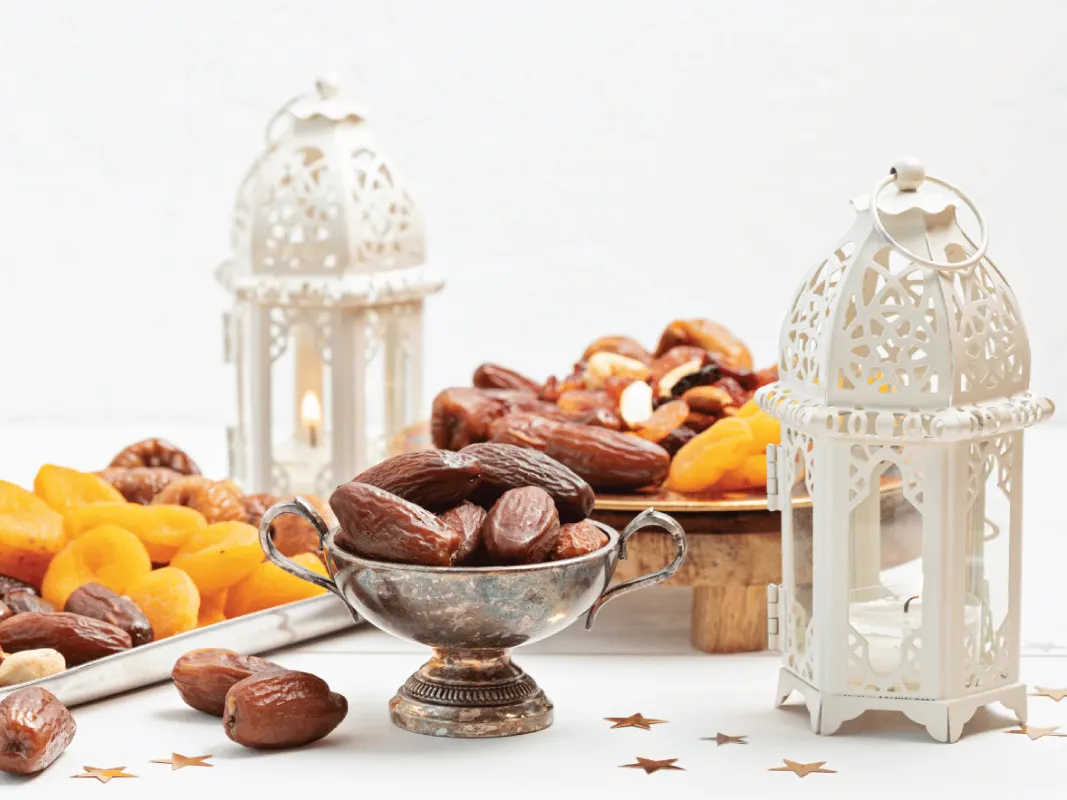
Wellness: Mind, Body & Soul
Beyond food and fashion, wellness has become a central part of the modern Ramadan experience. Younger generations are approaching fasting with a holistic mindset, incorporating nutrition, fitness, and mindfulness practices that enhance both physical and spiritual well-being.
Guided meditation apps, sunrise yoga sessions, and low-impact workouts timed around suhoor or iftar are gaining popularity. Nutritionists are also tailoring meal plans that balance hydration, energy, and digestion, ensuring that fasting is approached consciously rather than as a challenge.
Wellness extends to mental health, too. Social media campaigns and workshops encourage reflection, gratitude, and digital detox during Ramadan, creating space for mindfulness and inner calm amid the month’s bustling events.
Digital Innovation & Community
Technology is also reshaping Ramadan in the GCC. From online charity drives and virtual Quran sessions to interactive cooking tutorials and wellness challenges, digital platforms allow younger audiences to maintain community engagement while embracing modernity. Influencers and content creators are curating Ramadan guides, showcasing recipes, styling tips, and self-care routines that resonate with lifestyle-conscious followers.
The convergence of spirituality, wellness, and lifestyle trends is helping young Gulf residents personalize their Ramadan, crafting experiences that honor faith while reflecting contemporary sensibilities.
Key Insights – Ramadan in the GCC is no longer just about fasting—it is about holistic living, cultural expression, and mindful indulgence. Suhoor pop-ups, fashion capsules, and wellness routines are reshaping the month for younger generations, creating a Ramadan that is vibrant, stylish, and spiritually grounded.
As BUZZAAR explores lifestyle trends across the Gulf, one thing is clear: the holy month is evolving into a modern celebration of faith, wellness, and culture, where tradition meets innovation and community flourishes in new, creative ways.

Smart Homes, Smarter Lives: GCC's Tech-Savvy Urban Living
The Gulf has always been at the forefront of luxury and innovation, but in recent years, urban living in cities like Dubai, Doha, and Saudi Arabia’s NEOM is entering a new era of intelligence. Smart homes, AI integration, and futuristic architecture are transforming not only the way residents interact with their spaces, but also how they experience convenience, sustainability, and lifestyle in their daily lives.
AI and IoT: Redefining Domestic Life
The rise of Artificial Intelligence (AI) and the Internet of Things (IoT) is central to the GCC’s smart home revolution. From climate control and energy management to home security and personalized entertainment, technology is making living spaces intuitive and responsive.
In Dubai’s high-rise apartments, residents can adjust lighting, temperature, and window shades with a simple voice command or app. AI-powered assistants anticipate user habits, automatically adjusting settings for optimal comfort and energy efficiency. In Doha, luxury villas in smart communities integrate IoT devices that manage irrigation, pool systems, and even grocery replenishment, allowing residents to spend less time on chores and more on lifestyle.
Futuristic Architecture and Design
Urban development in the GCC is no longer just about opulence—it is about intelligent design that enhances sustainability and lifestyle. NEOM, Saudi Arabia’s $500 billion smart city project, exemplifies this vision. From modular, AI-optimized homes to fully integrated energy-efficient infrastructures, NEOM aims to create a city that anticipates residents’ needs while minimizing environmental impact.
Similarly, Dubai’s architectural marvels, such as the Museum of the Future, double as functional smart ecosystems. These buildings use sensor-driven energy systems, predictive maintenance, and adaptive design to respond to environmental conditions and occupant behavior, creating spaces that are not only visually stunning but highly efficient.
Lifestyle Integration: Health, Convenience, and Security
Smart homes in the GCC extend beyond automation—they enhance wellness, safety, and convenience. Sensors monitor air quality, water usage, and lighting, optimizing indoor environments for health and comfort. Sleep-tracking systems, AI-assisted home gyms, and personalized wellness apps integrate seamlessly with living spaces, making self-care effortless and connected.
Security is another major focus. Smart locks, facial recognition, and real-time surveillance networks ensure residents feel safe while maintaining privacy. In high-tech gated communities, predictive algorithms detect unusual activity, alert homeowners, and even interface with emergency services—all while residents enjoy a hands-off, stress-free lifestyle.
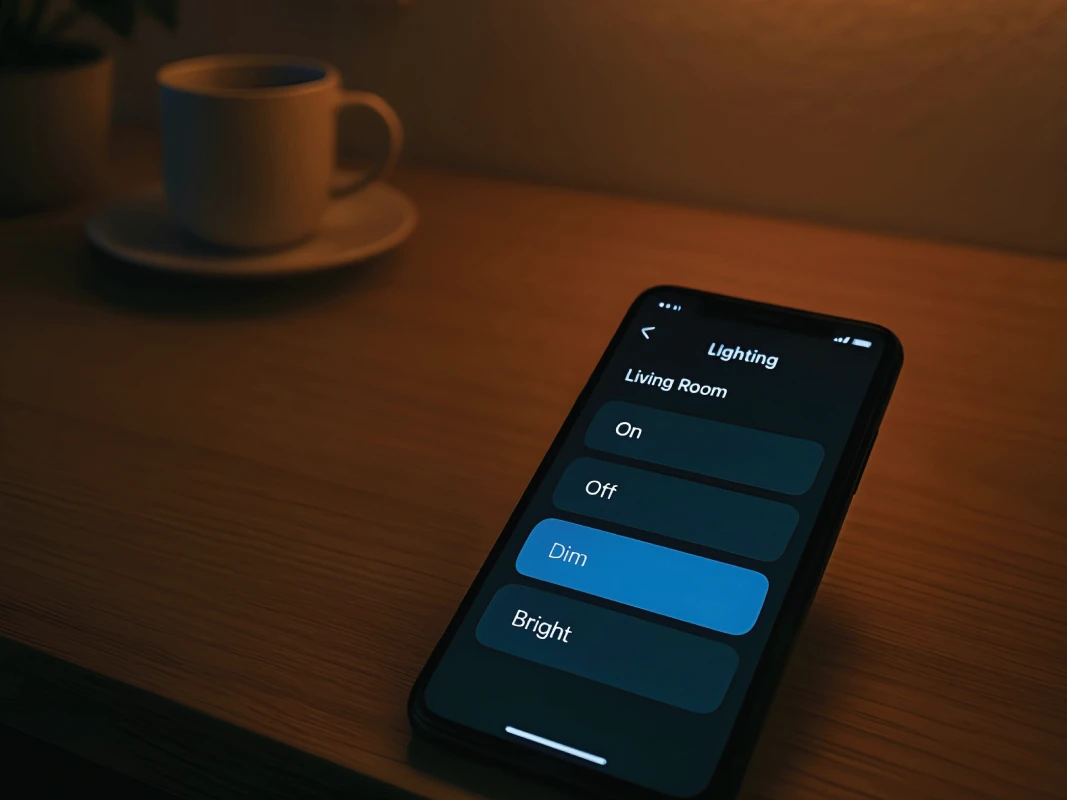
Sustainability Meets Luxury
Smart urban living in the Gulf is also redefining luxury by prioritizing sustainability. Energy-efficient appliances, solar-powered rooftops, and AI-controlled heating and cooling systems reduce carbon footprints while cutting costs. In Doha, vertical farming and smart water recycling systems are being integrated into high-rise apartments and community hubs, reflecting a shift towards eco-conscious urbanism without compromising style or comfort.
The Future of Smart Living
The GCC’s embrace of smart technology is more than convenience—it is a lifestyle evolution. Communities are being designed to integrate digital connectivity with social interaction, wellness, and sustainability. Residents can personalize their homes while contributing to greener, more efficient urban ecosystems.
This integration of AI, IoT, and forward-thinking architecture is also shaping cultural perceptions of luxury. Gone are the days when extravagance meant mere size or décor—today, intelligence, efficiency, and adaptability define modern opulence.
Key Insights – From NEOM’s visionary cityscape to Dubai’s AI-driven high-rises and Doha’s intelligent villas, smart homes are transforming how Gulf residents live, work, and thrive. Technology is no longer an accessory—it is woven into the fabric of daily life, enhancing comfort, wellness, and sustainability.
As BUZZAAR explores lifestyle trends across the region, one thing is clear: the future of urban living in the GCC is not only luxurious—it is smarter, safer, and profoundly connected.
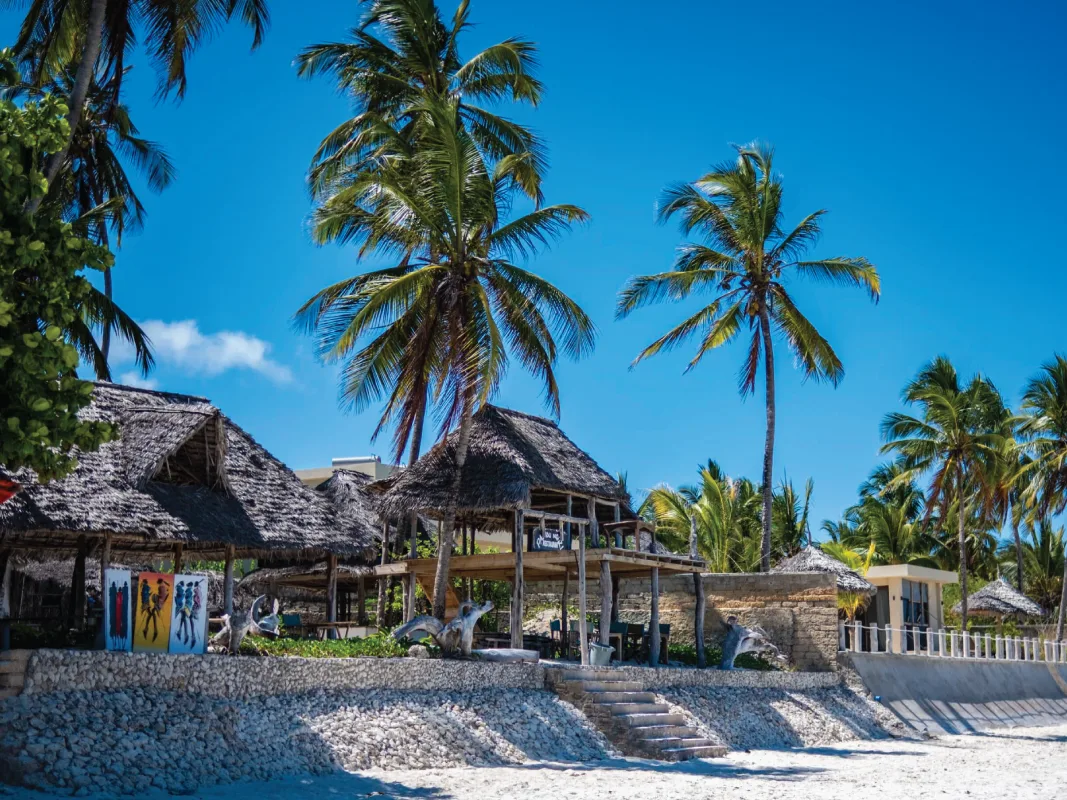
ZANZIBAR – Where the Spice of Life Meets Paradise
Nestled in the turquoise waters of the Indian Ocean, just off the coast of Tanzania, lies Zanzibar – an exotic archipelago that has remained a well-kept secret among seasoned travelers. While it has long served as a cultural and commercial crossroads, Zanzibar is now rising as one of Africa’s most enchanting and luxurious travel destinations – particularly attractive to visitors from the GCC region seeking something beyond the ordinary. From its white-sand beaches and spice plantations to its historic Stone Town and thriving marine life, Zanzibar offers a sensory journey that’s both tranquil and invigorating.
The Allure of the Archipelago
Zanzibar is not just a destination; it’s a state of mind. The mere name evokes images of tropical bliss, winding spice-scented alleys, and swaying palms under coral-orange sunsets. Its unique cultural heritage – a blend of African, Arab, Persian, and European influences – gives Zanzibar a character that’s both ancient and refreshingly modern. And for those who seek more than just another beach holiday, Zanzibar serves up a deeply immersive experience: from barefoot luxury to soul-stirring culture.
For GCC residents – often seeking cooler getaways during the scorching summer or long weekends – Zanzibar provides an ideal escape. It’s just a few hours by flight from major cities like Dubai, Doha, and Muscat. Visa requirements are relatively relaxed for most GCC nationals and residents, and a variety of direct and connecting flights now make travel easier than ever.
Why Zanzibar? A Destination with Many Faces
- Unparalleled Natural Beauty
Whether you are a luxury seeker, nature lover, or wellness traveler, Zanzibar checks every box. The beaches are postcard-perfect – think powdery white sand, transparent waters, and calm tides. Nungwi and Kendwa on the northern coast are favorites among travelers for their pristine conditions and dazzling sunsets.
The eastern shores, including Paje and Jambiani, are renowned for their kitesurfing culture and boho-chic resorts. The calm southern stretches like Kizimkazi are ideal for dolphin-spotting and those looking for peace and seclusion.
- Cultural Fusion at Its Best
One of the most enriching aspects of Zanzibar is its melting pot of cultures. Stone Town, a UNESCO World Heritage site, is an atmospheric maze of narrow alleys, historic mosques, bustling bazaars, and grand Arabian-style houses. It’s a living museum where the past meets the present. The Omani influence, in particular, is strong – from architecture to cuisine – a reminder of the centuries-old maritime trade that connected Muscat to Zanzibar.
GCC travelers often find a nostalgic connection here, with familiar aromas of cardamom, clove, and saffron wafting through the air. The call to prayer echoing from centuries-old minarets overlaid with Indian Ocean waves can feel both foreign and familiar.
- The Spice of Life – Literally
Zanzibar is often referred to as the ‘Spice Island,’ and for good reason. The island’s interior is dotted with spice farms where cloves, vanilla, cinnamon, nutmeg, and pepper flourish in fertile soils. A spice tour isn’t just a tourist gimmick – it’s a fascinating insight into the island’s history as a major spice exporter and its deep connection to the culinary cultures of Arabia and India.
Visitors can walk through lush plantations, learn how each spice is cultivated, and enjoy traditional Swahili meals infused with the very flavors they’ve just seen harvested.
When to Visit?
Zanzibar’s tropical climate makes it a year-round destination, but certain periods are more favorable than others:
- June to October: This is the dry season and arguably the best time to visit. Temperatures are pleasant, skies are clear, and humidity is low – perfect for beach lounging or exploring Stone Town.
- December to February: A warm period with little rainfall. Great for water sports and diving.
- April and May: The long rains make this season less ideal for travel, although the island is lush and serene during this time, and accommodations are more affordable.
For GCC tourists looking to escape summer heat from June to August, or for holiday breaks in December or Eid, Zanzibar is perfectly timed.
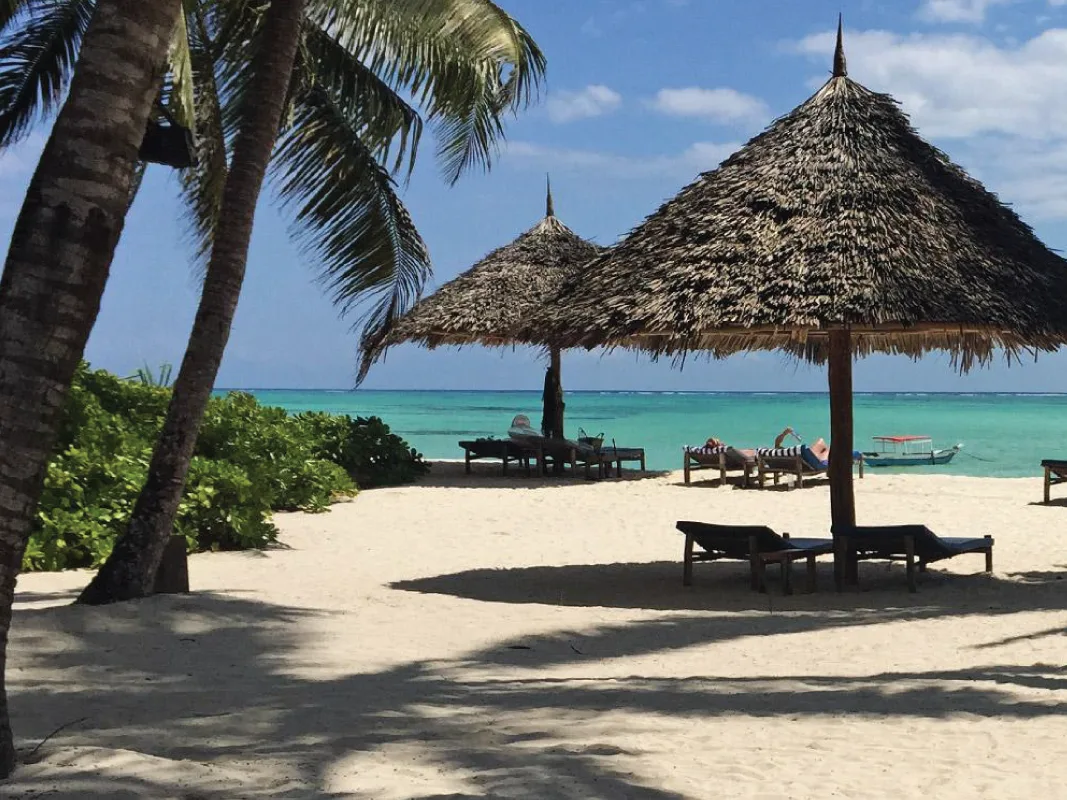
GCC Investment and Travel Trends
Interestingly, Zanzibar is not just luring tourists – it’s catching the attention of investors and developers from the GCC. The launch of high-end beachfront developments and boutique resorts has attracted interest from Dubai and Doha-based investors. Some resorts even offer fractional ownership or timeshare models, giving GCC nationals and residents a second home in paradise.
Additionally, wellness retreats, halal travel packages, and family-friendly resorts are on the rise – directly targeting affluent Gulf travelers. The government of Tanzania has streamlined processes to welcome more Middle Eastern investment, including visa-on-arrival policies and tax incentives for developers.
A Taste of Zanzibar – The Island’s Cuisine
Zanzibar’s cuisine is an aromatic adventure – a spicy symphony shaped by African, Arab, Persian, and Indian flavors. You’ll find dishes like Zanzibar biryani, pweza wa nazi (octopus in coconut milk), and fresh grilled seafood straight from the ocean. Street food at Forodhani Gardens in Stone Town is a must-try experience, with vendors grilling everything from sugarcane skewers to the famous Zanzibar pizza (a savory-sweet crepe-like dish with meat, eggs, and chili).
Muslim travelers from the GCC will feel at home, as the island’s population is predominantly Muslim, ensuring that halal food is available almost everywhere.
Must-Do Experiences
- Sunset Dhow Cruise: Sail the Indian Ocean aboard a traditional dhow, sipping fresh juice or coconut water while watching the sun dip beneath the horizon.
- Jozani Forest: Meet the rare Red Colobus monkey and walk through ancient mangroves in the island’s only national park.
- Snorkeling and Diving in Mnemba Atoll: One of East Africa’s most renowned diving spots with coral reefs, sea turtles, and playful dolphins.
- Visit Prison Island: A short boat ride from Stone Town, home to giant tortoises and a somber historical site once used for slave trade.
- Spa & Wellness Retreats: Unwind at one of Zanzibar’s world-class spas offering traditional Swahili treatments, massages with locally sourced oils, and yoga sessions on open decks overlooking the sea.
Practical Tips for GCC Travelers
- Dress modestly in public areas, especially in Stone Town and local villages. Swimwear is fine at resorts and beaches.
- Currency: Tanzanian Shilling (TZS) is the local currency, but USD is widely accepted.
- Language: Swahili is the local language, but English is spoken in all tourist areas. Arabic is also understood in parts of the island.
- Connectivity: Most luxury resorts offer Wi-Fi, but it’s good to buy a local SIM card for better mobile coverage.
Final Word: Zanzibar Is More Than a Destination
Zanzibar is an experience that seduces the senses and nourishes the soul. It’s where nature meets culture, and where luxury coexists with authenticity. For the GCC traveler – weary of over-commercialized destinations and yearning for a place with soul, story, and scenery – Zanzibar is the answer.
It’s a place where the spice of life meets paradise – and leaves you wanting to return, again and again.

